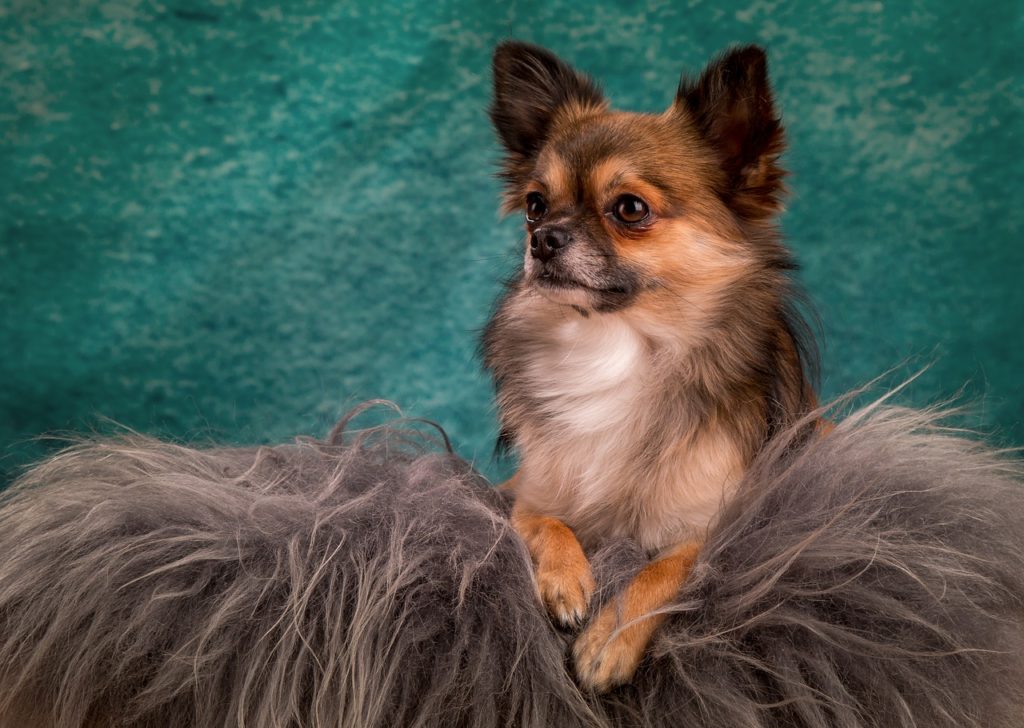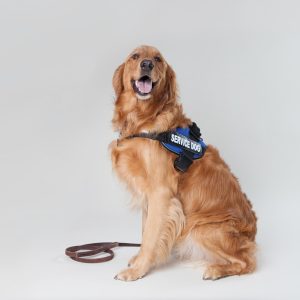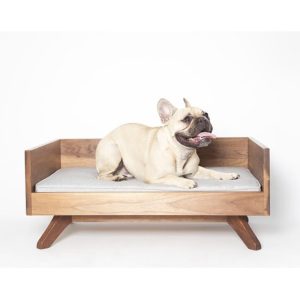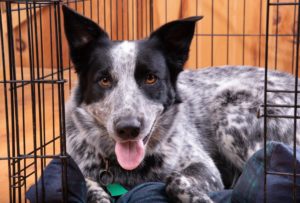Even if you stifle a laugh, odds are you don’t appreciate it when your dog attempts to hump something. A favorite toy, their best friend at the dog park, your neighbor – it doesn’t matter. It’s nervous laughter prompted by an awkward situation. And certain conditions make the scene even more embarrassing. Such as having a neutered male perform the act. Shouldn’t he have lost that urge? Or, worst of all, when you have to cope with FEMALE dog humping. What’s SHE doing trying to mount another dog? You’re laughing, but it’s nervous laughter. And you’re probably trying to hide. Meanwhile, people are staring and asking what’s wrong with your dog. Before you barricade yourself – and your poor dog – in the house, let’s figure out what’s going on.
Female Dog Humping: Sexual Behavior
Female dog humping begins around a dog’s first heat cycle. However, before that point, you can see puppies attempting to mount one another. There’s a theory the youngsters are practicing for the future, but no one knows for certain. It isn’t until sexual maturity (around six-months-old) that the encounters take on a sexual intent. This is why it’s recommended that you get your dog spayed around that time. Intact females often hump the male they intend to mate with. And they may hump other females in heat in response to the pheromones in the air.
How do you recognize “sexual” female dog humping? It’s pretty easy. There are several different displays that precede the behavior:
- The tail goes up
- Ears are curved backward
- They paw at the other dog
- She gives play bows
The flirtacious behavior tells the other dog she has an interest in them. (And if you’re seeing these clues, you know what your girl’s about to do)

Female Dog Humping: The Reality
But mounting behaviors aren’t confined to intact dogs. The behavior pops up whether or not they have their reproductive organs. Which is what confuses people. After all, isn’t “humping” a sexual behavior?
Not always. According to Nick Hof, Certified Professional Dog Trainer and Chair of the Association of Professional Dog Trainers, humping results from a “heightened arousal state, but that doesn’t mean it is necessarily sexual.” You can see female dog humping (or even males, for that matter) for plenty of other reasons. Owners tend to focus on the sexual side of things, which is why they get embarrassed. Once you start to probe a little deeper, though, you find out that your dog may be signaling a problem.
Poor Socialization
Puppies need proper socialization as they’re growing. If they don’t receive plenty of exposure to other people, dogs, sounds, and novel situations, they can end up confused when suddenly introduced to a dog park situation. Here are all of these dogs barking and asking them to play, and they don’t know what to do. The excitement is too much, and the result is female dog humping. It’s NOT dominance, as some people suspect. Instead, it’s the result of not understanding HOW to play properly. There’s SO much going on around your female dog, and she’s having trouble processing the information.
This excessive mounting can happen in a spayed OR intact female. And there’s nothing sexual about it. The problem is she didn’t receive the socialization she needed as a youngster. Now she has all of these playmates, a whopping bucket of excitement, and her brain doesn’t know how to respond. If you rescue a dog or purchase a puppy mill dog, this is a genuine situation. You don’t know their history, and they may have spent their youth wedged into a cage with no exposure to the outside world.
Stress
Do you see female dog humping when company comes over? (If so, odds are you’ve stopped inviting friends to come by) Or does your check on the camera reveal your dog mounting a favorite toy? When anxiety levels start climbing, you can see your dog turning to humping as a way to cope with the stress. Because, yes, it’s a comforting sensation.
YOU feel awkward when your dog starts humping company. And if your female dog humping is turning into a compulsory behavior, you have a serious problem. That means they’re struggling to function normally. You NEED to get a handle on their stress levels. Is it the strangers that upsets them or the number of people? Do they get upset about you leaving? Should you look into finding a better way for them to stay entertained during the day? If anxiety is rearing its head, you need to look into the cause.
Dominance
As people expect, female dog humping CAN be a sign of dominance. Wild dogs exhibit the behavior within a pack to establish the order – both the males and females. If you have a particularly aggressive breed, you may see your female attempting to exert her place over everyone else she comes in contact with – and that includes people.
Per Dr. Peter Borchelt, a Certified Applied Animal Behaviorist, there’s also a theory called “pre-natal masculinization.” If you have a litter where the males outnumber the females, the testosterone transfers to the females during development. As a result, the female dogs tend to exhibit male characteristics, including a need to exert dominance. But if you don’t know your girl’s birth history, this is hard to guess.
Female Dog Humping: Illness
While you’re covering your eyes and wishing a hole in the earth would swallow you up, you’re probably NOT considering health possibilities for female dog humping. But your little girl may be trying to let you know something’s wrong. Several health problems can cause a female to exhibit mounting behaviors – not for sexual release, but because she’s THAT uncomfortable.
- Allergies
- Urinary incontinence
- Urinary tract infection
If you’re seeing your dog licking excessively, having frequent urinations, OR struggling to urinate with the humping, it’s time to get to the vet’s office. There’s a good chance the mounting behavior is another of her symptoms. Your vet can run lab work and confirm what’s going on. And with treatment, there’s a good chance that embarrassing humping will stop.

Stopping the Female Dog Humping Behavior
Whether you have a male or female dog, humping behaviors are awkward. And if they’ve become frequent (more than once or twice a day), you need to address the behavior. Luckily, there are easy – and gentle – ways of stopping the mounting. Though if you have an intact female, the first order of the day is to get her spayed. As long as her hormones are functional, you’re facing an uphill battle.
Distraction
One of the best ways to stop female dog humping is to distract your dog as soon as you notice her starting the mounting behavior. Most dogs approach their chosen object, pant, lick, or paw. That’s your cue to break the cycle. You can do this by teaching the “Leave it” command if you haven’t already. As soon as she moves away, make sure you reward her.
You can also reach for a different toy, offer a favorite chew, or toss something for her to chase. By providing a distraction, you’re breaking her line of thought. It’s not cruel in the slightest, and you can make the distraction appear casual (in case someone else is watching).
Your other option is to ask her to perform a command that prevents the mounting behavior. Something as simple as “Sit’ will do the trick. She’ll focus on her training and turn away from her humping. You DO need to praise and reward her each time she obeys.
Prevention
If you know female dog humping is due to stress or poor socialization, you need to return to square one. If people coming over, puts your dog over the top, set up a quiet room away from all of the activity. Give her a puzzle toy (NOT her usual mounting toy) to distract her mind, turn on soft music to soften the noise, and move her bed in there so she can rest. This will reassure her that when people come to visit, things aren’t hectic and crazy. Gradually, you can have people come back to say hello to her. As she relaxes, you can bring her out to visit for a few minutes before she returns to her “safe room.”
For dogs that panic during vet visits, start making “social calls.” Stop by so she can get pets and treats, without a need for poking and prodding. She’ll start to see those people aren’t “out to get her.” Then, when she needs to have an actual check-up, it won’t be as frightening for her.
If you’re struggling with the source of your female dog humping, consider working with a professional trainer. They can sit down with you and help you recognize the problem areas. Then they’ll get a plan together for you. You want to look for a Certified Applied Animal Behaviorist (CAAB) or a Board-Certified Veterinary Behaviorist (Dip-ACVB). You CAN look to a Certified Professional Dog Trainer (CPDT), but make sure they have professional training with experience treating compulsive behaviors (this ISN’T required for their certification).
“Um, Your Dog…”
Let’s face it, talking about female dog humping isn’t at the top of most people’s lists. But that’s because the majority of people don’t understand what’s going on. It’s not always a sexually-driven behavior. In fact, most of the time, something else is going on – especially in spayed females. Once you recover from your embarrassment, you can start to put the pieces together and figure out what’s going on. And if you’re not seeing that mounting behavior more than once or twice a day, it’s actually not a concern.
That may not ease the blush from your cheeks, but at least you know you have a normal dog.













No comment yet, add your voice below!